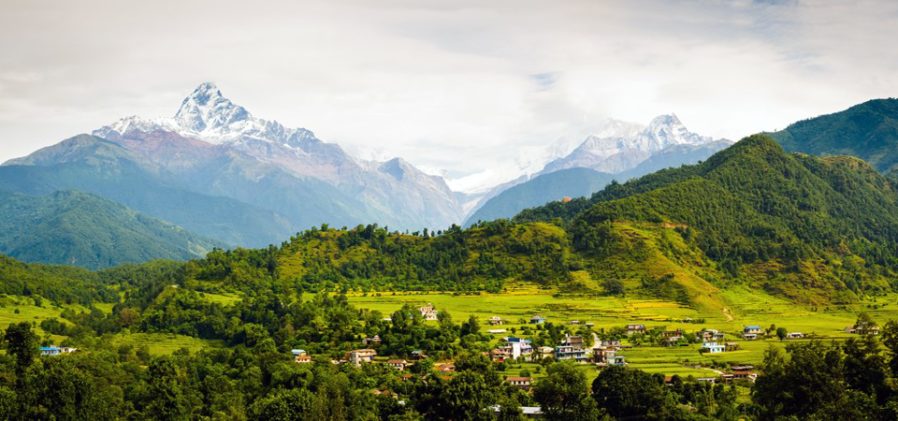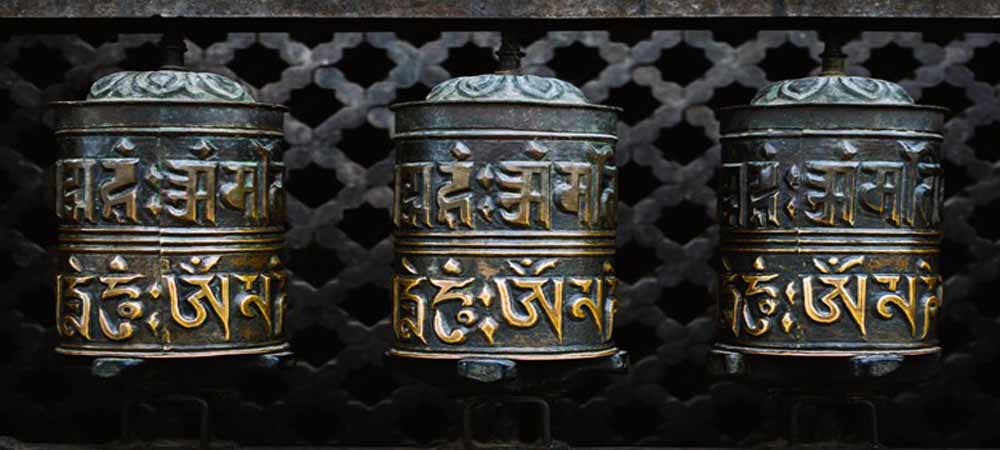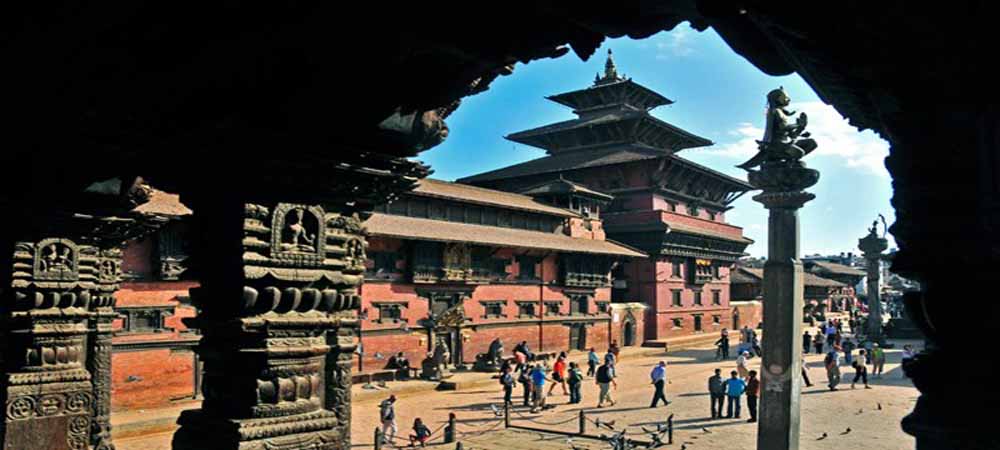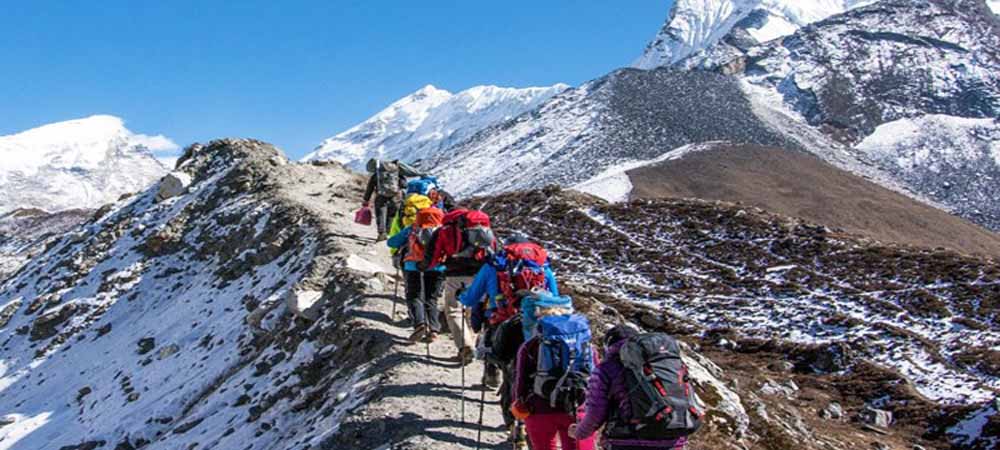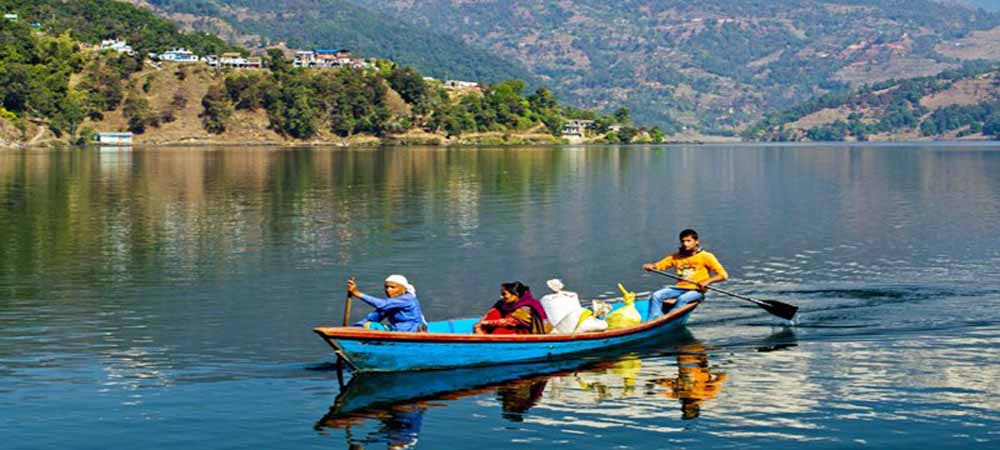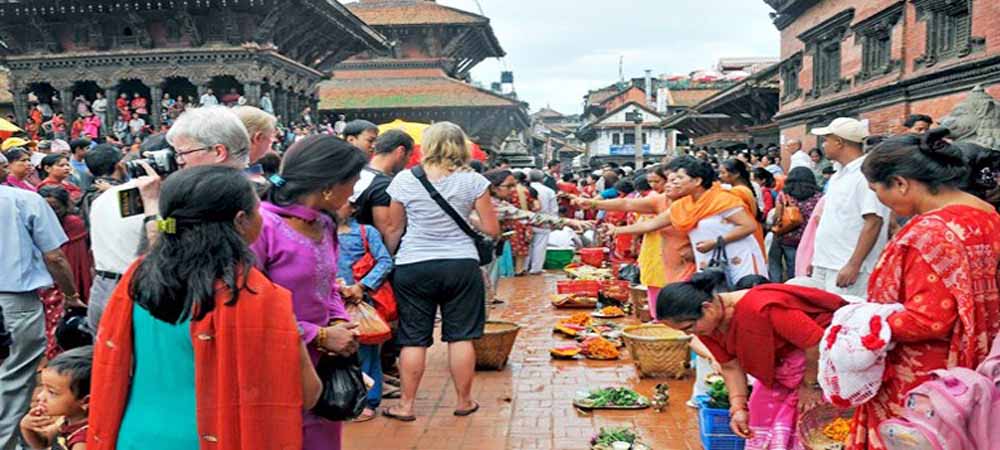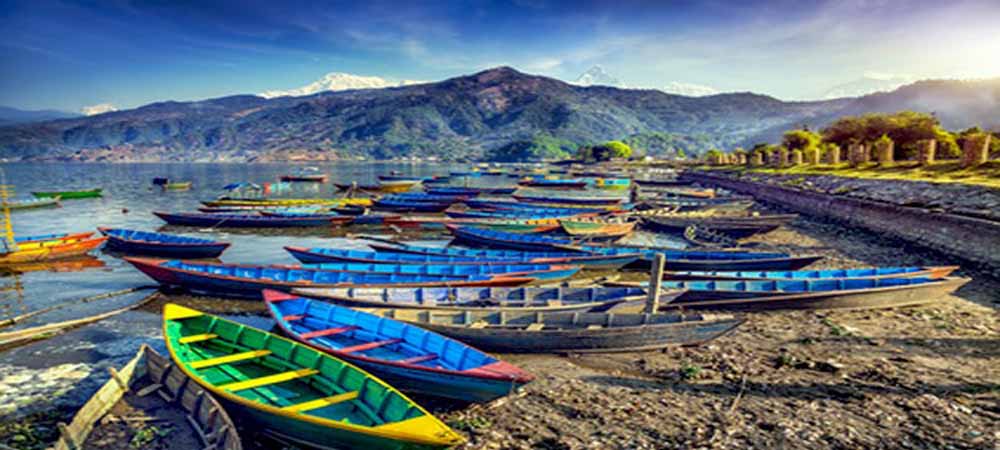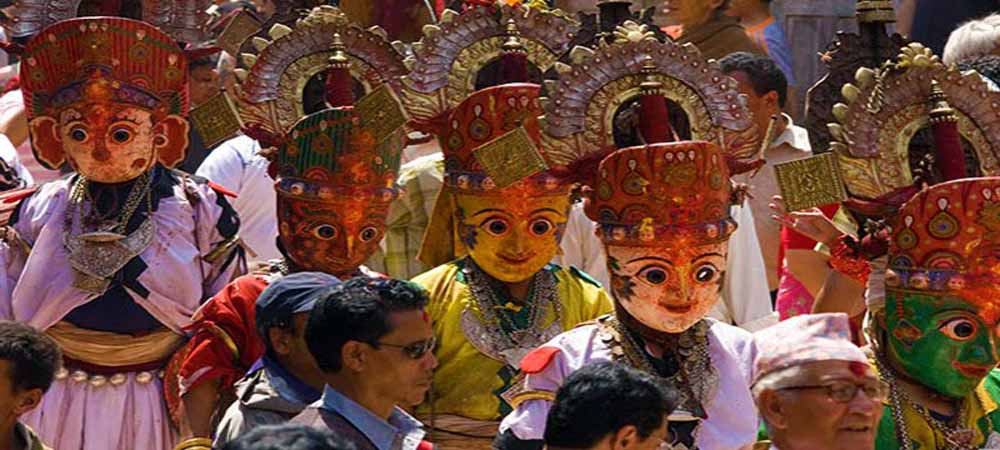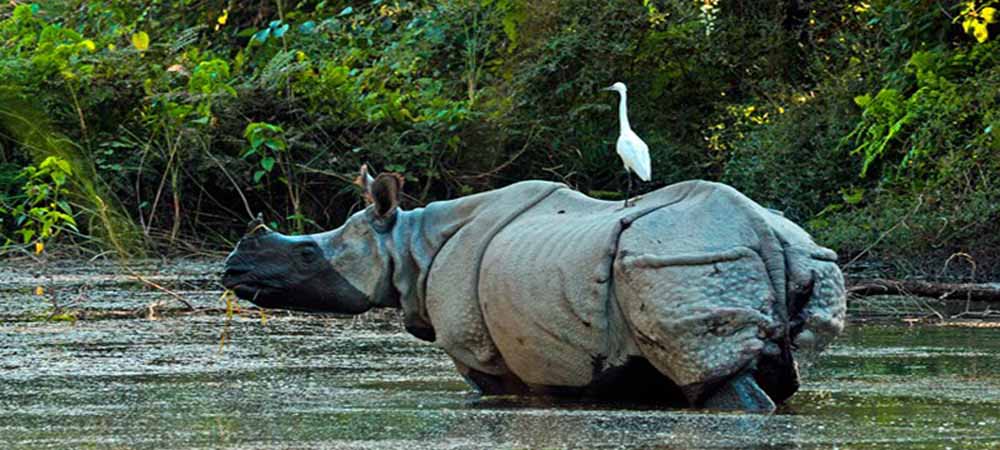With the expectation that Nepal is a small, land locked country, travellers often visit it as an extension to its big brother from the south, India. But the differences are clearly noticeable as soon as you enter the country. For a start, Nepal has a much slower pace of life, with the absence of the manic, bustling, mega-cities of India. Even its capital – Kathmandu – seems quiet and exotic in comparison. Of course, Nepal’s biggest attraction has to be the Himalayas, with the Annapurna mountains having some of the best trekking in the world, and Everest being the largest mountain.
Combine this with a fascinating mix of Hindu and Buddhist cultures that live happily side by side, national parks where you can spot rare Bengal Tigers, and ethnic groups and hill tribes such as the infamous Gurkhas; fearless warriors who still volunteer to serve in the British armed forces that will surprise you, and likely become much more than just a side trip. For such a small country, Nepal has much to offer.
Spirituality
Nepal is a rare example of religious tolerance and harmony, between its two largest religions, Hinduism and Buddhism, as well as it’s various animist ‘folk religions’, the dominant one known as ‘Kiratism’. Nepal was officially a Hindu Kingdom up until 2008, when it then became a secular, Democratic Republic. Nepal’s isolation for many centuries has meant that many of the religious sites across the country with their unique architectural style are incredibly well preserved – despite the series of earthquakes over the centuries.
Pashupatinath Temple, in the east of Kathmandu, is like a miniature version of India’s Varanasi. Designated as an UNESCO World Heritage Site since 1979, Pashupatinath Temple is the oldest in Kathmandu, and is one of the holiest Hindu sites in the world. Built to honour the Hindu deity Shiva, it is also a place famous for its cremations and funeral rites, as well as for its daily rituals performed by Hindu priests, and it’s population of Sadhus: Holy ascetics who have renounced all worldly possessions.
Bhaktapur is located only 8 miles east of Kathmandu. It is the finest example of medieval Nepalese architecture in the country, and used to be an ancient Newar (one of the main ethnic groups in Nepal) city, and is home to numerous terracotta temples. Arguably the finest of all the temples in Bhaktapur is the Changunarayan Temple. This temple is rumored to be oldest in the entire nation and was built to devote to god Vishnu. Wandering around the back streets of Bhaktapur is like stepping back in time, and may well make you feel like you’ve stepped into an Indiana Jones film, such is the ambiance and architecture of Bhaktapur and its plethora temples!
Only a few kilometres from the border of India, Lumbini is a must-see for travellers visiting this area. Another UNESCO site in Nepal since 1997, Lumbini is the birthplace of the Buddha, and the complex is home to the infamous Maya Devi Temple, considered to be the very spot on which the Buddha was born. It is one of the most sacred sites in Buddhism, and every day Buddhist monks and lay people from all over the world come to visit and pay homage to it. The site also includes monasteries from every school and tradition of Buddhism, including Therevadin, Mahayanan and Vajrayanan, as well as scared Boddhi tree, and the Peace Pagoda. Lumbini is visited by numerous different religions and cultures every day.
Other sites include Swayambhunath Temple, that sits on top of a large hill in western Kathmandu, and is known as ‘the monkey temple’, for it’s population of mischievous monkeys who are known to slide down the railings that lead to the top of the hill. The top affords breathtaking views of Kathmandu.
Explorient offers a 4-day Private Kathmandu tour covering most of the capital’s city sights and beyond.
Trekking
Home to the top eight largest mountains in the world, it comes as no surprise Nepal is a paradise for trekkers. And the good news is that there are treks to suit every level of fitness, age and skill level.
The Annapurna circuit is extremely popular and takes about 3 weeks. Despite the time it takes, it is not overly challenging and can even be done without a guide (in the right season). On average, there are tea houses and guest houses aplenty every 30 minutes on the trail. It will take you through some of the most breathtaking landscapes in the world: rivers, gorges, lakes and plateaus, as well as Tibetan Buddhist villages and views of epic 8000 metre mountain peaks. The circuit can be broken down into smaller routes to suit your needs: like Annapurna Base Camp, taking only a week, or the Annapurna Sanctuary Trek, taking 14 days.
Shorter treks include the Royal Trek, taking 3 to 4 days, which is suitable for all fitness levels yet still has phenomenal views of mountains and passes through local villages. It is known as the ‘Royal Trek’ because it was a favourite trek of Prince Charles of the United Kingdom.
For a taste of Gurung and Gurkha culture, the Sikles Trek might be the one for you, taking 4-7 days. It is a homestay based trek where each night after hiking you will stay with locals in their villages. It’s a memorable experience as you eat with the family and get to know them intimately. You will also be treated like royalty and be fed wonderful food and be offered plenty of “Raiksi” – very strong Nepalese rice whisky.
Finally, for the super-adventurous, the Everest Base Camp Trek is a 21-day trek to the base camp of the highest mountain in the world. It is only for the fit and healthy, and the adventurous, but is well worth the effort for memories that will last a lifetime, coming face to face with the largest peak in the world.
There are literately hundreds of treks throughout Nepal – especially in the Annapurna region, where Pokhara serves as the base to organize treks, guides and buy all the gear you need. It is also a spectacularly beautiful town in itself, with a crystal clear lake that reflects the towering Annapurna mountains like a mirror. It is also great place for organizing all sorts of meditation and yoga retreats.
Adventure
Aside from trekking, Nepal is blessed with some of the greatest white water rafting in the world. Pokhara is the best place to arrange rafting or kayaking tours, and the main rivers cater to all levels of experience (much like Nepal’s trekking). Everything from 1 day to 10 day excursions are available, and some of the best rivers include Kali Gandaki, Seti, and Tamur.
Mountain biking is also a fantastic way to appreciate and view Nepal’s stunning nature, and is of course the most environmentally friendly way to travel. However, the mountainous terrain can make it challenging and probably only for the experienced and physically fit. Popular routes include Kathmandu to Dhulikhel, whilst the “Rajpath” gets easier towards the end as it goes down into the plains of Nepal near the border with India.
Paragliding can be arranged easily in Pokhara, and as you would expect, is a spectacular experience, with the thermal up-drifts allowing you to remain in the air with the Annapurna mountains all around you for over an hour on a good day.
For adrenaline junkies, Nepal has the third highest bungee jumping point in the world, at 160 metres, located above a tropical gorge with a river below. It is run by “The Last Resort”, and is located at Bhote Kosi River.
Motorcycling here is some of the best in the world, due to Nepal’s climate and breathtaking scenery. You do not need to be an expert outside of Kathmandu, as the roads here are much less chaotic than neighbouring India, but nevertheless the hairpin mountainous roads can be a challenge, so exercise caution. An international driving permit is also required under Nepalese law. If Pokhara is your cup of tea, be sure to check out our 3-day private Pokhara tour featuring the highlights of beautiful Pokhara Valley.
Shopping
Nepal has several crafts and clothes that are very popular throughout the country, especially in Kathmandu and Pokhara. Thangka and Mandala paintings are very popular Buddhist works of art that depict incredibly complex tantric shapes and deities around religious symbols, such as the Buddhist “Wheel of Life”, that sums up the Buddhist belief system in one masterful painting. For clothing, Nepal is also a great place to pick up the finest quality Pashmina (the finest type of cashmere wool), that is woven into scarves with exquisite colours and patterns. In Pokhara, you can even try your hand at painting Thangkas yourself at one of the numerous shops in the lakeside area, which often offer classes.
All these products are available at rock bottom prices, since Nepal is one of the cheapest countries in the world.
Food
Nepal’s big brother to the south seems to hog all the lime light when it comes to food, with Indian cuisine being famous the world over. But what does Nepali cuisine have to offer?
The country’s ‘national dish’ is widely agreed to be “Dal-bhat”. It literately means lentils and rice in Nepalese, but do not let this deceive you into thinking it is just composed of those two ingredients. Dal-bhat – much like the Indian ‘Thalli’ – is served on a big metal plate, and you get the main staples of lentils and rice, but with a variety of other side dishes on the plate, which makes each dal-bhat you try unique. The side dishes can include takari – which is a delicious vegetable curry – a selection of pickles, a special Nepali yogurt called “Juju dhau” (meaning “King Yogurt”) and even meats such chicken, mutton and dry-cured spicy buffalo. Dal-bhat also has the advantage of being perfect trekking food, with its balance of carbs, vitamins and protein. You simply will not come away from Nepal having tried this and likely loving it.
Momo is a common spin on the Chinese dumpling, popular in Nepal and Tibet, with its origins disputed somewhat between the two cultures! Regardless of its origins, Nepali Momos are made with white-flour dough and filled with chicken or buffalo meat, and for vegetarians, often spinach, cheese and other tasty vegetable fillings. It is steamed and often eaten with pickles, and can also have a hot spicy tomato sauce drizzled over it to give it a spicy kick. But more rarely, these days it can also come half-fried, in which case it is called a “Kothey” instead. Simple, but delicious and available all over Nepal, especially from street vendors.
Chatamari is often labelled the “Nepalese Pizza”, and in appearance it looks just like that! However, this tradition Newari dish actually has a rice-crepe base, which is made from rice-flour. This crepe base is then topped with a mix of minced meat, egg and spiced vegetables.
Other worthy mentions include “Sel Roti”, a dish certain to satisfy people with a sweet tooth, but only really commonly found around the festival of Tihar. It is essentially Nepal’s answer to the donuts, but made from rice flour which is deep fried in rich butter. It is often served alongside the aforementioned Juju dhau – rich Nepali yogurt, which you can dip it in to balance the sweetness.
And finally, if you are a cheese fan, you simply cannot come away from Nepal without trying Yak’s cheese. Yaks are found all over the Himalayan region and so it’s easy to find Yak’s cheese virtually anywhere. They always come in varieties: A soft variety, and a harder one called “Churpi”.
Nature
Although Nepal is dominated by the Himalayas and is often the main reason millions flock to this country every year, Nepal has a lot more to offer for nature lovers than just mountains.
There are a few special lakes in Nepal. Phewa Lake, which is a 4km long lake on the outskirts of Pokhara, is really special because its crystal clear water reflects the Annapurna mountain range perfectly like a mirror glass. This is a view you will never get sick of waking up to every morning, with the main tourist strip in Pokhara being located on the banks of the lake. You can also hire boat trips on the lake, which is especially magical at sunrise. Phewa Lake is featured on our 2-night Scenic Pokhara Discovery Tour.
For something much more dramatic, the Gokyo Lakes located in Sagarmatha National Park will not disappoint: These lakes together actually make the highest freshwater lake system in the world, with Thonak Lake being the highest at an incredible 5000 metres above sea level. The surrounding mountains give these lakes an otherworldly aura about them, and will make you feel that you are looking at an alien world.
Finally, if you want to see one of the most spectacular panoramic views in the world, Nagarkot is the place for you. Only 2 hours North-East of Kathmandu, Nagarkot is fantastic because you do not have to trek here to be rewarded with such natural beauty. It has a well-earned reputation for the best place in Nepal for viewing the best the Himalayas has to offer: You can see 8 of the 13 mountain ranges in Nepal from here, including the king of them all, the Mahalangur range, home to mount Everest. But you can also see all the way to the Annapurnas from here, as well as the dense forested hills of pine trees, that go on for as far as the eye can see. It is especially magical at sunset or sunrise. The real icing on the cake is that you can enjoy all this from the comfort of your hotel balcony, and the journey from Kathmandu is a pleasant drive in itself.
Festivals
Nepal – being predominantly Hindu – celebrates many of the same Hindu festivals as India to the south. But these festivals are celebrated differently in Nepal. Hindus in Nepal worship Shiva or the Shakti sect, which celebrates the Goddesses Durga and Pavarti as the supreme being (like in West Bengal in India).
Dashain is the longest festival in Nepal – 15 days long in total – and is arguably the most auspicious festival in the whole year. It is celebrated by Nepalese people around the globe. Dashain falls in September or October each year, depending on when the full moon appears. The most important days of the festival are considered to be first, seventh, eight, ninth and tenth day.
All across Nepal, ‘Shakti’ is worshiped in her various manifestations: But the focus is mainly on Durga, as the festival is a celebration of the day Durga defeated the Demon called Mahishasura in the realm of the Gods. It is therefore a symbol of the victory of good over evil. In India, the same festival is celebrated differently by people who follow Vishnu rather than Shakti, and thus they celebrate a different tale of how good triumphed over evil, with Lord Rama’s victory over a similar demon.
You can expect the celebrations to include numerous colourful kites being flown, lots of card games being played by adults for money and fun, and special bamboo swings being constructed. Do not be afraid to have some fun on these swings, as all age groups enjoy it in Nepal, not just children!
The festival in recent times has attracted some controversy for its animal sacrifices, a tradition that goes some centuries back. Indeed, it can be sobering to see animals such as buffalo being ritually sacrificed in person. It is definitely not for everyone, but it is easy to avoid these scenes as a tourist so do not let this put you off this festival!
Tihar is essentially an extension of Dashain, and the Nepali equivalent to India’s infamous Diwali festival. It follows only a few days after Dashain, and is a 5-day festival often known as “the festival of lights”. Unlike Dashain, this festival shows particular respect and reverence animals. It is not uncommon at all to see dogs, as well as cows and even crows, dressed up in colourful flower petal garments, given painted tikas, as well as given delicious food! This symbolises the respect that Hindus have for dogs and cows (which are holy in Hinduism), and the crows and ravens are fed to avert grief and death in their homes.
People also clean their houses, and decorate their homes and streets with coloured rice, sand as well as millions of lit candles. The candles in particular give any town or city you are in in Nepal at the time a real magical feel. This is intentional, as Hindus believe it will bring the Goddess Laxmi into their homes and bless them with good fortune and wealth.
On the final day, gifts are exchanged between brothers and sisters: Usually sisters give their brothers special garlands made from flowers that will not wilt for months, which symbolises their love and wishes for a long life for their brothers. Brothers in turn will give their sisters any sort of gift in thanks and appreciation. This symbolises the importance and strengthening of family in Nepali Hindu tradition.
Finally, Gai Jatra is celebrated by the Newar people in the Kathmandu Valley region, and is a dedication to deceased ancestors. A cow or child dressed as a cow is often paraded around the streets. The Newar people believe that this holiest of animals helps their deceased relatives journey in the afterlife towards reincarnation. The traditions and celebrations of Gai Jatra varies from place to place, with stick dancing taking place in Bhaktapur, and portrayals of dancing deities in Kiritpur. In the evening, small theatrical plays are displayed on the streets, depicting acts of social injustice and evils, and the audience will generally mock the actors in amusing ways, such as throwing water or flour at them, and shouting out jokes!
There are dozens of other festivals celebrated throughout Nepal throughout the year. So wherever you visit, you are likely to find some sort of festivity occurring.
Wildlife
With the largest mountain range dominating much of Nepal, you’d be forgiven to think that the wildlife viewing opportunities would be fixed solely on mountain wildlife, such as birds of prey and wolves. However, this is not the case, because Nepal does have a substantial amount of lowland areas and plains that straddles the Indian border.
A UNESCO world-heritage natural site, Chitwan National Park, in the lowland southern area of Nepal, is rightfully the most popular wildlife viewing areas in the country. It has subtropical forests, river systems and grassland plains, completely different to the mountainous topography to the north. Here you can organise safaris to see a huge variety of different wildlife: A 2000 square km area is protected and home to a population of endangered Bengal Tigers, with leopards also appearing from time to time on the edges of the park. Other mammals include striped hyenas, golden jackals, fishing cat, civets, mongooses and yellow throated martins. However, the greater one-horned Rhinoceros is one of the stars of the show here (alongside the Bengali Tiger), with the population in the park recovering at a steady rate since the 1970s. Bull elephants also make an appearance from time to time, often looking for potential mates. Other animals include crocodiles, monitor lizards and 17 different species of snake. And for bird watchers, the park has numerous threatened and rare species, including the black-chonned yuhina, as well as colourful kingfishers and the critically endangered, spotted eagle.
Other low-land reserves include Koshi Tappu Wildlife Reserve in eastern Terai. Here you have the opportunity of seeing one of the last remaining populations of ‘Arna’: An endangered species of long-horned wild buffalo. For the best chance to see wild elephants, Bardia National Park is the best park. Yet even if you are unlucky and do not see any wild elephants, you can always have fun riding, bathing and feeding the park’s domesticated elephant population.
Of course, if you came to Nepal for the mountains, then aforementioned Sagarmatha is perfect, not only for its high altitude lake system, dense forests and spectacular mountain scenery, but also for its fauna: 118 species of bird are on offer here, such as the Himalayan Monal, and red and yellow billed choughs. But the rare mammal species are the real stars of the show, if you are lucky enough to get a glimpse of them: Snow leopards, Himalayan wolves, Himalayan Black Bears, the red panda and the musk deer can all be found here amongst the mountains and forests.
So Nepal; So much more than just a side-trip from India! For such a small landlocked country this nation really has enough on offer to keep you enchanted for the duration of your trip. Indeed, the nature, spirituality and culture here provide such a wonderful melting pot that many find themselves staying for months rather than weeks, with the spell-binding Himalayas making it very difficult to say “goodbye” to this remarkable nation.
If Nepal sounds like a world part, it truly is. Be sure to check out our array of private India, Nepal & Bhutan Tours for ideas and suggestions.

